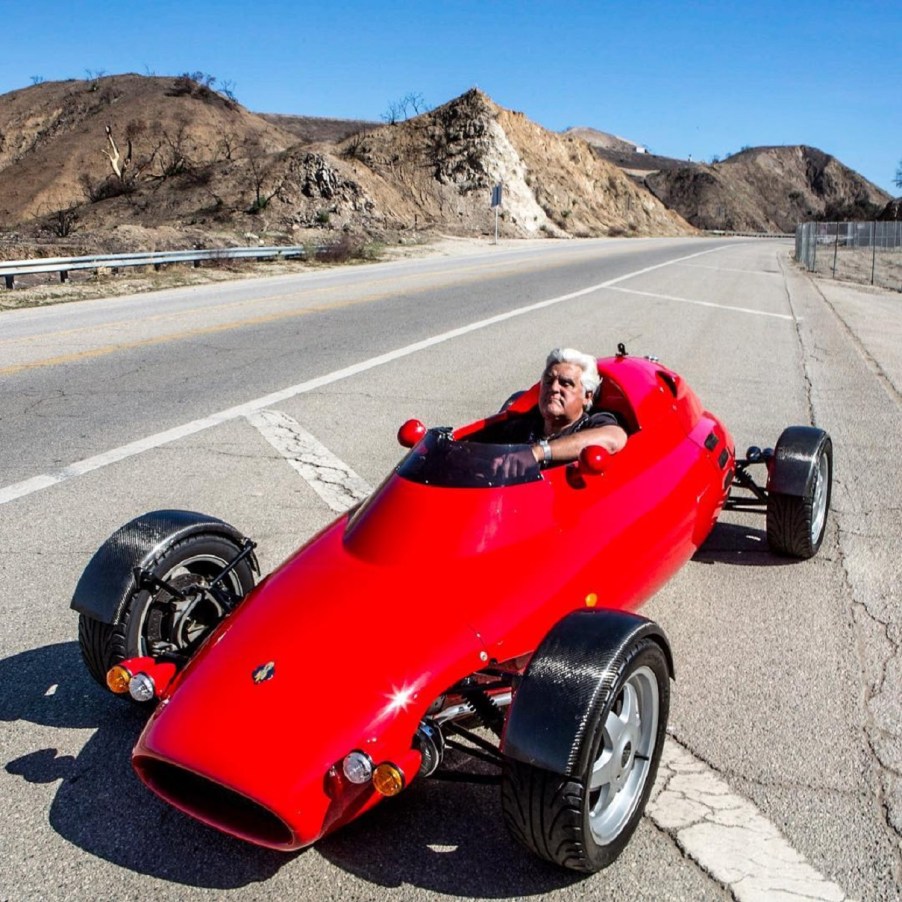
Before the McLaren F1, Gordon Murray Made a Rocket
Even if his latest work, the T.50, hadn’t been well-received, Gordon Murray would always be remembered for the McLaren F1. While it’s no longer the fastest production car in the world, it’s still the fastest naturally-aspirated production car. But even outside its top speed, the McLaren F1 is a marvel of 90s auto engineering. However, it’s not Gordon Murray’s first road car. That would be the Light Car Company Rocket.
Gordon Murray’s Light Car Company Rocket

By the 90s, Gordon Murray was already a respected race car designer, Hagerty reports. But he wanted to make a road car in the same vein as the minimalist Caterham Seven, Autoweek reports, only even more stripped-down. To quote Murray himself, he wanted to “’out-Chapman Colin Chapman,’” Road & Track reports. So, together with racer Chris Craft, he created the 1991 Light Car Company Rocket.

Colin Chapman’s mantra was “simplify and add lightness.” And in that vein, the Light Car Company Rocket succeeds. With all its fluids, it only weighs 837 pounds, Motorious reports, which is enough to classify it as a ‘quadricycle’ in Britain. Think Polaris Slingshot or Morgan 3-Wheeler, but with 4 wheels.
That low weight comes from a fiberglass body and space frame chassis, as well as a lack of safety features. While it has pop-up headlights, they’re manually-operated. The ‘Phase 1’ models had analog gauges, while ‘Phase 2’ examples have a digital dash, Hagerty reports. However, despite its looks, the Light Car Company Rocket has 2 seats.
The Light Car Company Rocket doesn’t have a typical automotive engine. Instead, it has a Yamaha four-cylinder bike motor, mounted in the rear. Early models used a 143-hp 1000cc motor, Evo reports; later, it grew to 1070cc and 171 hp. And it revs to 11,000 RPM.
There’s some confusion regarding the Rocket’s transmission: some sources claim it’s a 5-speed, others say it’s a 6-speed. It’s possible both options were available. In either case, because of the motorcycle engine, it’s not a conventional transmission. Instead, it’s a racing-style sequential manual, with an added reverse gear and a 2-speed final drive.
How does the Light Car Company Rocket compare to the McLaren F1?

It’s strange to call a supercar ‘practical,’ but the McLaren F1 is more practical than the Light Car Company Rocket. Not only does it have more seats, but it also has a roof, climate control, a trunk, and a radio. It’s also significantly faster.
But in terms of thrills, the Light Car Company Rocket may just be the F1’s equal. As in the Ferrari F50, the Rocket’s engine and transmission are stressed members, Goodwood reports, for sharper handling. And while it ‘only’ has 171 hp, its low curb weight gives it the power-to-weight ratio of a Porsche Carrera GT, Evo reports.
You have to rev the engine high to reach that max power—but it’s worth it to hear it shriek. Also, the 2-speed final drive means you can choose to prioritize acceleration or top speed.
The steering is “hyper-direct and full of feedback,” R&T reports. And it’s not just the whole car that’s light, Evo reports; the throttle and clutch pedals are too. With the lack of mass and minimal bodywork, you can easily position it around corners. Plus, while it may not have the McLaren F1’s storage space or 3-across seats, the Light Car Company Rocket is practical in another sense. Because it’s so light, its tires and brake pads lost for a long time. So long, it’s not unusual for Rocket tires to go hard and crack before they go bald.
Getting your own Rocket

Quoted Rocket production figures differ slightly between sources. But the general consensus is no more than 55 were built during its 1991-1998 run. That makes it rarer than both the McLaren F1 and the new T.50. It’s also noticeably cheaper than either too.

In its day, the Rocket retailed at roughly $50,250; that’s the modern equivalent of $95,600. And it hasn’t gotten any cheaper over the years. In 2014, one was listed at $99.5k, Bring a Trailer.
You can get a brand-new Caterham Seven or Morgan Plus 4 for that money. But then, what is a Seven but a heavier Rocket?
Follow more updates from MotorBiscuit on our Facebook page.


